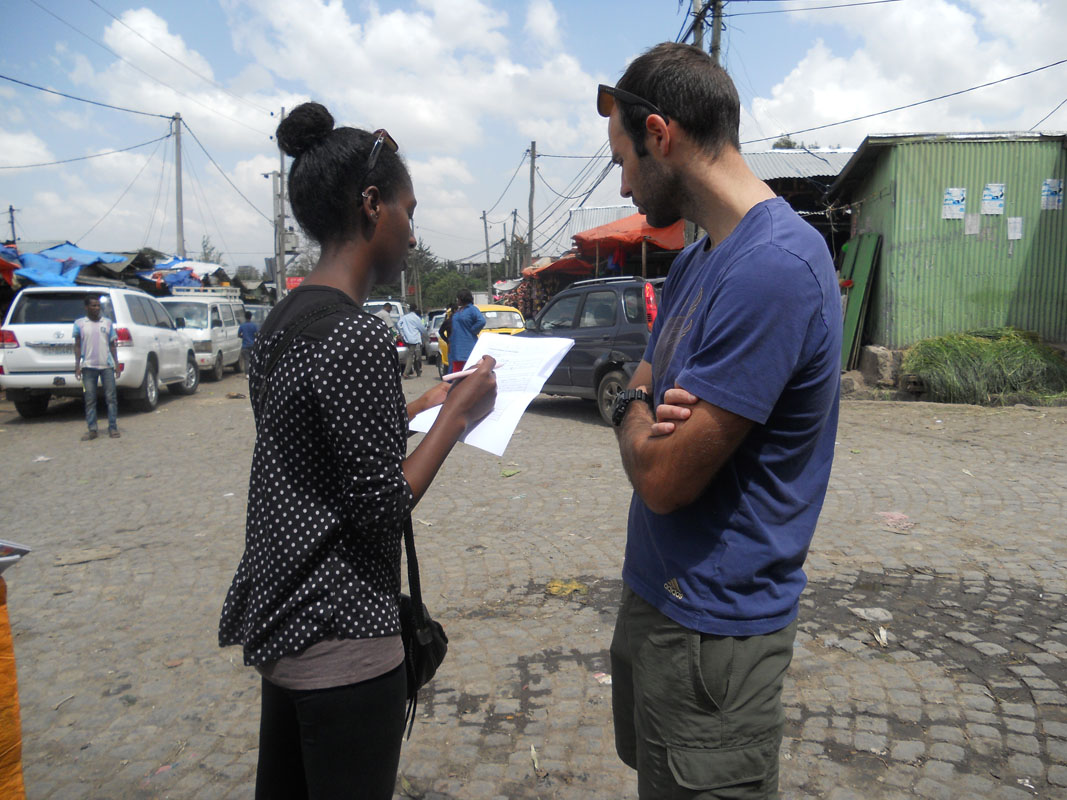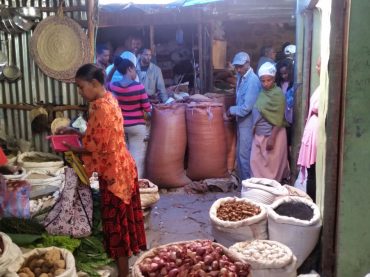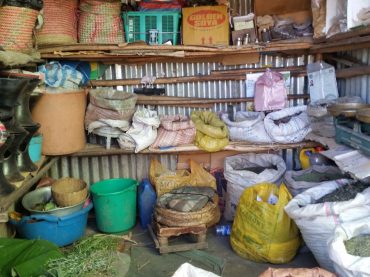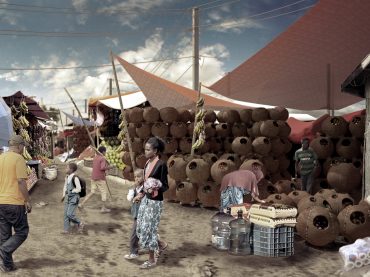During week 2 of the project, the team went back to the markets to present vendors with different ideas for cooling as well as preserving food.
Here are the flyers we created for our first round of provocation questionnaires.

MODEL 01: Cooling UNDERGROUND
Knowledge about the system: In the culture of the Gurage region cooling underground has been done for a long time. Most of the Gurage vendors stated that they know the process for the storage of ‘Kocho’, butter, ginger, pumpkin, and sometimes even meat. Most vendors also know that pumpkin can stay up to one year inside the ground; the other vegetables they have used also include ginger, potato, sweet potato, and beetroot.
Reception: The idea was received well but the fact that their day to day lifestyle being in a fast pace makes it hard to achieve storage for a longer period of time. Some also expressed their concern that putting vegetables including potato, carrot, sweet potato or beetroot only makes them grow as seeds and doesn’t store them as they are.

MODEL 02: CLAY COOLING
Knowledge about the system: For the vendors coming from hot areas of the country, they have heard about clay cooling in a slightly different manner: Digging the earth, pouring sand inside it then putting a bucket filled with drinking water. This is used to cool drinking water. Others haven’t heard about it. Some other vendors said that the system of cooling water in clay pots is used a lot in the villages. They also correlated the relationship between, storing salad leaves by soaking them in water then covering them, and then again soaking them in water, some also mentioned that salad leaves are stored in water to make them fresher. The other correlation is the storage of butter in cool water.
Reception: Most are happy to try it out, although they are all afraid of the fragility of the material and the amount of space it will take to store within their stall. They are also afraid that if vegetables are covered for a long time and that they are not aerated, it will create a rotting problem within the vegetables.

MODEL 03: TERRA COOLING
Knowledge about the system: The clay lid cover is usually regarded as something which preserves moisture and makes it even warmer; it is usually used in the rural parts of the country to cook injera.
Reception: Some vendors are afraid that the lid will only preserve and even make more moisture, like its function in storing injera. They are also afraid that it will be too small to store large amounts of fruits and vegetables. Space to keep it might also be an issue.

MODEL 04: MITTY COOLER
Knowledge about the system: One of the interviewers knows about the system as he has seen it in a place known as ‘Awramba’ . However none of the interviewees know about this system.
Reception: All vendors have had positive feedback, they all said its form looks like it will save space, aerate the vegetables enough and that it could somehow work.

MODEL 05: CANNED FOOD
Knowledge about the system: Although many of the vendors have not seen any kind of preservation in canned glass, there were a few who mentioned that they have seen Chinese buyers preserve their food with salt and oil. A long time ago, people in the city used to store lemons inside jars in front of their kiosks so as to sell them, now these jars don’t exist anymore, nor are lemons sold in Kiosks.
Reception: Most vendors were more interested in the jars themselves than the preservation system. All of the vendors that were questioned are open to the idea, although they doubted the fact that soaking vegetables in water will make any enhancement in its preservation.

MODEL 06: COMPOST
Knowledge about the system: Everyone knows about composting, and its uses. In Agoza market, they have a little farm land that they use for growing vegetables, and they use their compost for its use. In the Rwanda market, there is a recent law that was passed which said that market sellers can not take their organic waste outside of the market and that they have to give it to the waste collectors that it can go to the main organic waste system of the system. This is a recent development initiative that is being implemented by the city.
Reception: In the Agoza market, everyone said that composting requires space to implement. Most vendors rent their space and don’t have place to compost, they are also afraid of organizing themselves to make compost as that might create some differences within the community.

MODEL 07: DEHYDRATOR
Knowledge about the system: Most cultures within the country have allowed meat drying, and spice drying for making the complex sauces of the Ethiopian dishes. Some mentioned that they have dried chopped onions, potatoes, sweet potatoes and beet root, for their preservation where once it is inserted in the water it maintains its old nature. Fruit drying including tomatoes, is unheard of within the Agoza market, some even doubt its success. In the Rwanda market, there was one interviewee who said he has done it once or a few times and has found the process of drying very successful.
Reception: The idea of a dehydrator is foreign to many, but well received. Vendors would like to try out the idea, but would like to see a proof of concept first.





